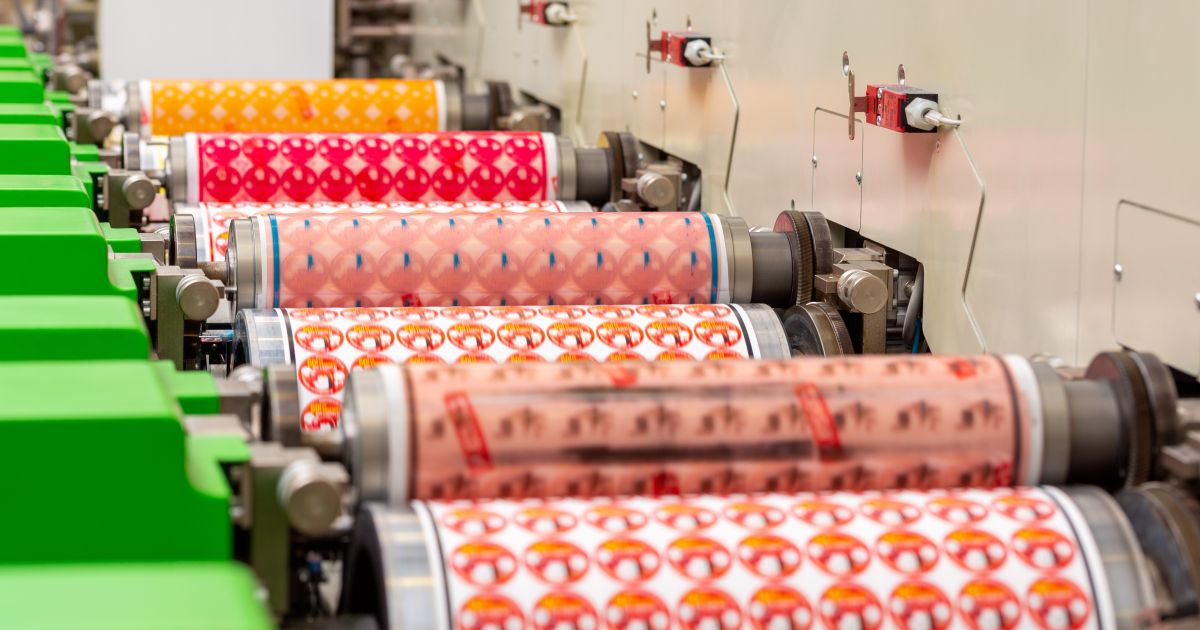Dot gain in flexographic printing is a crucial aspect that significantly affects print quality and color accuracy. This phenomenon occurs when the printed dots appear larger on the substrate than intended, resulting in darker and muddier images.
For anyone working within the realms of flexographic printing, understanding dot gain is essential to improving overall printing outcomes. Let’s explore the intricacies of this common challenge and how it can be managed effectively.

What is Dot Gain?
Dot gain, also known as tonal value increase, refers to the apparent increase in the size of halftone dots printed on substrates. This change affects the final color and tone of the image, leading to inconsistencies with the design expectations.
Types of Dot Gain
To delve deeper, it’s important to distinguish between the two main types of dot gain:
- Mechanical Dot Gain: Often results from the plate making process, where pressure during printing spreads the dot beyond its intended area.
- Optical Dot Gain: This occurs when the ink spreads slightly under the transparency of the substrate, visually enlarging the dot size.
Causes of Dot Gain in Flexographic Printing
Understanding the causes of dot gain in flexographic printing is crucial for resolving the issue. Here are some contributing factors:
Press Conditions
Variations in press settings, especially pressure and speed, can lead to increased dot gain. Adjustments need careful monitoring to achieve optimal results.
Substrate Variability
The substrate’s texture and absorption capabilities can significantly influence how the ink spreads, affecting dot gain.
Ink Properties
Ink viscosity and formulation play vital roles in dot gain. Correct properties ensure consistency and reduce unwanted spreading.
Measuring Dot Gain
Measuring dot gain involves sophisticated techniques, using specialized instrumentation to ensure color consistency. Process control tools like densitometers help in assessing and managing this parameter effectively.
Handling Dot Gain in Flexography
Calibration and Profiling
By regularly calibrating and profiling equipment, printing consistency can improve, reducing the impact of dot gain.
Control of Printing Conditions
Maintaining stable press conditions by controlling variables such as speed, pressure, and temperature plays a vital role in managing dot gain.
Substrate Selection
Selecting the right substrate that matches the ink and equipment reduces the risk of excessive dot gain.
The Role of Anilox Rolls
Using the correct anilox roll specifications tailored to the ink and paper type can mitigate the effects of dot gain.
CIP3/CIP4 Systems
Implementing these systems helps in automating and optimizing printing processes, further controlling dot gain.
Dot Gain Curve Adjustment
Adjusting the dot gain curve within digital prepress software is essential to align the printed output with the desired expectations.
Benefits of Managing Dot Gain
- Ensures color accuracy.
- Improves overall print quality.
- Increases production efficiency.
Managing dot gain effectively is a cornerstone for achieving high-quality prints in flexographic printing.
Latest Trends in Flexographic Printing
Modern printing technologies continue evolving, with new tools and strategies aimed at minimizing dot gain being introduced continuously.
These advancements ensure faster production times, improved print consistency, and increased environmental sustainability.
Conclusion
Understanding and managing dot gain in flexographic printing is essential for professionals striving for excellence. By implementing the strategies and techniques outlined, print outputs become more consistent and visually appealing, meeting the high standards of quality.

FAQ: Dot Gain in Flexographic Printing
What is mechanical dot gain?
Mechanical dot gain occurs during the printing process when pressure causes the printed dots to spread, affecting the print output.
How can dot gain be measured?
Dot gain can be measured using densitometers and other process control tools, allowing professionals to monitor and adjust their printing techniques.
Why is managing dot gain important?
Managing dot gain is crucial to maintain color accuracy and ensure high-quality print results.






